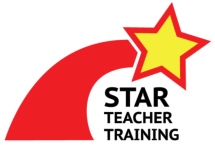Early into my first year teaching ESL in Vietnamese public schools I made a young boy cry. We were playing with a sticky ball, a toy many teachers are familiar with here. The students were in two teams. They’d raise their hands so they’d get to answer a question and throw a sticky ball at a target drawn on the board. The kids were 6 years old and really eager to play. Most of the 45 students were frantically waving their hands to participate so that I couldn’t fit everyone in. I thought the game had gone great until it finished and I was packing up my materials. I turned around and saw a boy sobbing at his desk. After asking his TA I found out that he was upset because he didn’t get to play. He’d raised his hand the entire time and I’d ignored him (along with more than half the rest of class). We’d played for 10 minutes and about as many students had gotten to participate. Thinking back, the frantic hand waving wasn’t just eagerness. It was frustration with my poorly designed game.
Rate of Participation (RoP)
Rate of Participation is simply how often each of your students gets to actively participate at a given moment and in both either your lesson or an activity. The problem with my game is a common issue in many large classes. The Rate of Participation for each student was terribly low. Looking back, each student got to participate in that activity less than once in 10 minutes. Only 10 lucky kids got to participate – and even they got to do something only once. The rest of their time was spent waiting, raising their hands, and getting more and more frustrated and disappointed. No wonder that after a few lessons like that the class’s mood had soured with fewer students trying to play the game. They’d seen that there was very little chance for them to have fun. My ESL classroom management became more difficult and everyone’s experience got worse.
High RoP activities include many or all students at the same time. Students are constantly engaged and have something to do. If they have to wait for their turn then it’s just for a minute or two. There are many ESL activities that have naturally high RoP. In previous posts I discussed Flashcard Safari, Drill Sergeant, Battle of the Scribes, and Magic Eyes. These allow each and every student to participate 100% of the time so nobody will be frustrated because they aren’t included.
Low RoP in ESL Classes
Most teachers are trained in environments with small numbers of students, usually 12 to 16. With these numbers it’s possible to use low RoP ESL activities and still include everyone. We can have one or two students playing at once and still include everyone in the lesson. Unfortunately, this doesn’t translate well to large classes and often causes problems.
Low RoP is often an underlying cause of poor behavior and poor achievement in large classes. Young learners are okay to wait short times for their turn – it can even increase their anticipation and enjoyment of a game – but their patience is limited and easily frustrated. Once they feel they’ve been denied their rightful opportunity then they lose trust in their teacher and enjoyment of the class. Young children’s ability to learn English is closely tied to their enjoyment of the process and their relationship with the other people (often adults) included. Participation rather than watching activities also pushes the students to think and engage which helps them retain information.
Increasing RoP in ESL Activities
We need to adjust our activities to frequently involve everyone. Many teachers of small classes will also find these adjustments useful for their own lessons as well.
Here are some easy changes to popular ESL games:
- Instead of having two teams, increase to three, four or more. For example, many teachers play Telephone (or The Whisper Game) with just one line of students. You can easily manage multiple lines. This means more students are speaking at the same time and there’s time for more rounds because of the shorter lines.
- Play in small groups instead of as a class. Lots of teachers play Hot Seat (or Taboo) with a single student at the front and their classmates all giving hints about a word. Instead, move them into small groups and have them play with each other.
- Eliminate winners and instead have the students play as a class for the fun of it. Instead of playing with a Sticky Ball you could play Stand Up/Sit Down to ask your questions.







